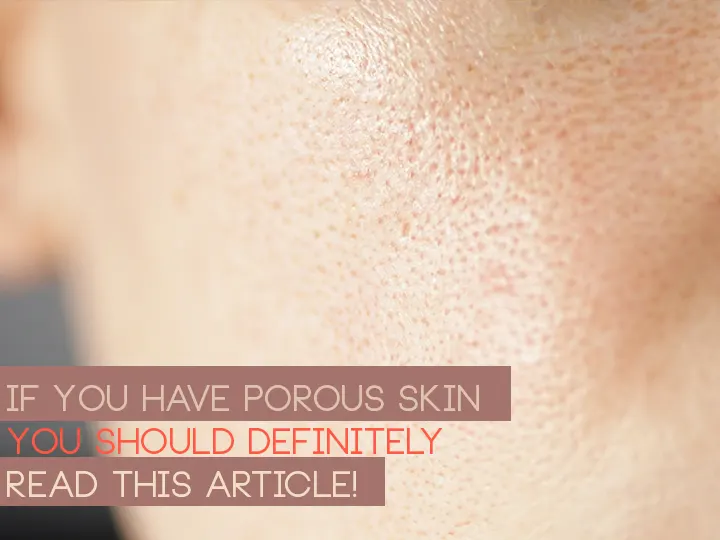
When it comes to taking care of our skin, many of us focus on common concerns such as acne, wrinkles, and dryness. However, some people struggle with a less well-known issue: porous skin. Porous skin is characterized by visible pores on the surface of the skin, and it can be challenging to keep clean and healthy. In this article, we'll discuss what porous skin is, what causes it, and most importantly, how to take care of it.
What is porous skin?
Porous skin is a term used to describe skin that has visibly enlarged pores. The pores can appear on any part of the body, but they are most commonly seen on the face, chest, and back. These pores can give the skin a bumpy, uneven appearance and can be more prone to blemishes.
What causes porous skin?
Porous skin can be caused by a number of factors. Some people are simply born with larger pores due to genetics. Others may develop enlarged pores as a result of sun damage, aging, or changes in hormone levels. When the skin is exposed to sun, it can cause damage to the collagen and elastin fibers, which can cause the pores to stretch out. Additionally, as we age, our skin loses elasticity, which can also lead to larger pores. Finally, hormonal changes, such as those that occur during puberty or pregnancy, can lead to increased oil production, which can also make pores appear larger.
How to take care of porous skin
While there's no surefire way to get rid of large pores completely, there are steps you can take to minimize their appearance and keep your skin looking its best. Here are some tips for taking care of porous skin:
Cleanse regularly
One of the most important things you can do for porous skin is to keep it clean. Use a gentle cleanser that is formulated for your skin type to remove dirt, oil, and impurities. Be sure to cleanse your skin twice a day, in the morning and evening, to keep it fresh and healthy.
Exfoliate
Regular exfoliation can help to remove dead skin cells that can clog pores and make them appear larger. You can exfoliate with a physical scrub or a chemical exfoliant, such as an alpha-hydroxy acid (AHA) or beta-hydroxy acid (BHA) product. Be sure to choose an exfoliant that is gentle enough for your skin type, and don't overdo it - once or twice a week is usually sufficient.
Moisturize
Moisturizing is important for all skin types, but it's especially important for porous skin. When the skin is dry, it can produce more oil, which can lead to clogged pores and breakouts. Use a lightweight, non-comedogenic moisturizer that won't clog pores, and apply it every day after cleansing.
Use a toner
A toner can help to remove any remaining dirt, oil, or makeup that your cleanser may have missed. It can also help to balance the skin's pH and reduce the appearance of pores. Look for a toner that is formulated for your skin type and use it after cleansing.
Wear sunscreen
Sun damage can make pores appear larger, so it's important to protect your skin from the sun's harmful rays. Choose a broad-spectrum sunscreen with an SPF of at least 30, and apply it every day before going outside.
Don't pick or squeeze
It can be tempting to pick or squeeze blemishes on porous skin, but this can actually make the problem worse. When you pick at your skin, you can push bacteria and oil deeper into the pores, making them even more clogged and inflamed. This can lead to more breakouts and can make pores appear even larger. Instead, use gentle, non-comedogenic products to treat any blemishes, and leave them alone to heal.
Consider professional treatments
If you're struggling with very large pores or persistent breakouts, you may want to consider professional treatments. Some options include:
Microdermabrasion: This procedure uses a device to gently exfoliate the skin and remove dead skin cells, revealing smoother, brighter skin.
Chemical peels: Chemical peels use a solution to remove the outermost layer of skin, revealing fresh, new skin underneath.
Laser resurfacing: This treatment uses a laser to remove damaged skin cells and stimulate collagen production, which can help to reduce the appearance of pores.
Before undergoing any professional treatments, be sure to consult with a dermatologist to determine which options are best for your skin type and concerns.
In conclusion, taking care of porous skin can be challenging, but with the right skincare routine and professional treatments, you can minimize the appearance of pores and keep your skin looking healthy and glowing. Be sure to cleanse regularly, exfoliate, moisturize, use a toner, wear sunscreen, and avoid picking at blemishes. And don't be afraid to seek out professional treatments if you need extra help in achieving your skincare goals. With patience and diligence, you can achieve the beautiful, healthy skin you deserve.